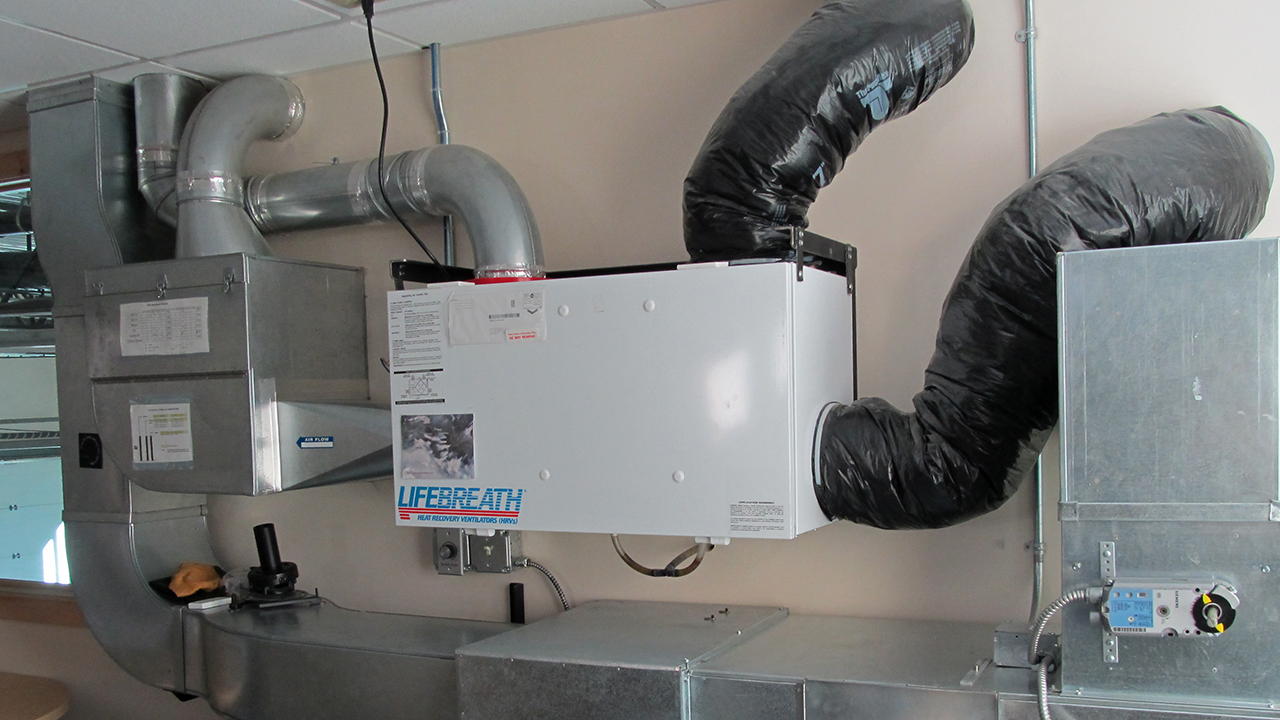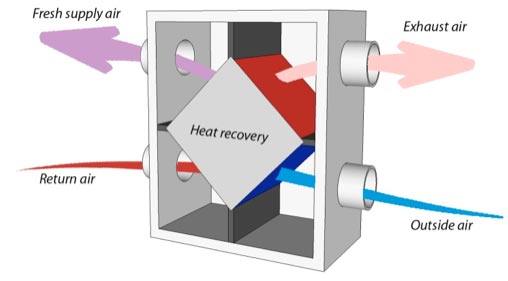Money-Saving Potential of HRV for Homeowners
Wiki Article
How Heat Recovery Ventilation Improves Indoor Air Quality and Reduces Power Costs
Heat Recovery Ventilation (HRV) systems play an important duty in enhancing interior air high quality while at the same time decreasing energy expenditures. By efficiently trading stale interior air with fresh outdoor air, HRVs assist keep suitable humidity and minimize pollutants. Furthermore, their ability to recuperate heat from outbound air decreases the strain on home heating and cooling down systems. As energy prices continue to increase, recognizing the full capacity of HRV systems comes to be progressively vital for homeowners and services alike.Recognizing Heat Recovery Ventilation Systems

Heat recovery ventilation (HRV) systems play a necessary role in enhancing indoor air top quality, specifically in contemporary, energy-efficient structures. These systems are designed to transfer warmth from the outbound stale air to the inbound fresh air, thus minimizing energy loss while keeping optimal temperature level levels inside. HRVs are composed of a warm exchanger, fans, and ductwork, promoting the continuous flow of air. By expelling indoor toxins and introducing fresh air, HRVs assist to stabilize humidity levels, avoid mold growth, and lower allergens. The efficiency of HRV systems depends on their capacity to recover approximately 80% of the warm from the tired air, promoting power preservation while making certain a healthy and balanced indoor setting. Their combination is important in achieving sustainable living techniques.
The Relevance of Indoor Air Quality
Indoor air quality (IAQ) is a critical aspect influencing the wellness and health of residents in any type of setting. Poor IAQ can result in various health issues, consisting of breathing problems, allergies, and fatigue. In addition, it can worsen current conditions such as bronchial asthma. Aspects contributing to reduced IAQ include pollutants from interior resources like cleaning agents, mold, and inadequate air flow. As a result, maintaining good IAQ is essential for advertising a safe and comfortable living or working space. Efficient methods to boost IAQ include regular tracking of air quality, appropriate ventilation systems, and lessening using harmful compounds indoors. By prioritizing IAQ, people can guarantee a much healthier environment that promotes performance and overall lifestyle.Power Performance Benefits of HRV Solutions
Lots of house owners and structure supervisors are progressively acknowledging the power performance advantages of warmth recuperation ventilation (HRV) systems. By transferring warm from tired interior air to inbound fresh air, HRV systems markedly reduce the energy needed for cooling and heating. This procedure decreases reliance on standard heating and cooling systems, leading to lower power bills. Additionally, HRVs help maintain a balanced interior environment, stopping extreme heating or cooling needs. The capability to recuperate as much as 90% of the heat from outgoing air additionally sustains sustainability initiatives by decreasing overall power intake. HRV systems contribute not only to cost savings however likewise to a lowered carbon impact, lining up with the growing focus on energy-efficient building techniques.Setup and Maintenance Considerations
The reliable application of heat recuperation ventilation (HRV) systems calls for cautious factor to consider of setup and upkeep elements to assure peak performance. Proper positioning of the HRV system is published here important, as it needs to be set up in an area that maximizes air flow while minimizing sound disturbance. In addition, ductwork needs to be properly sized and shielded to avoid energy loss. Routine upkeep, consisting of filter replacement and system cleansing, is essential to protect ideal functionality and interior air high quality. Owners ought to develop a routine maintenance timetable to determine and deal with possible problems before they rise. Partnership with knowledgeable specialists during both setup and upkeep stages can enhance the longevity and efficiency of HRV systems, eventually resulting in better interior settings and minimized power costs.
Real-World Applications and Success Stories
Exploring real-world applications of heat healing air flow (HRV) systems exposes their considerable influence on indoor air quality and energy efficiency throughout various setups. In residential buildings, home owners have actually reported better air high quality, leading to fewer allergies and respiratory problems. Schools carrying out HRV systems have actually noted enhanced pupil focus and lowered absence because of far better ventilation. Business structures, such as offices and retail spaces, have actually experienced reduced power expenses and increased worker performance. For example, a business office in a warm climate achieved a 30% right here reduction in energy bills after installing an HRV system. These success tales show that HRV innovation not only adds to much healthier atmospheres but additionally supplies concrete financial advantages, making it an important investment for numerous markets.Frequently Asked Inquiries
Can HRV Systems Lower Allergens in Indoor Air?
The performance of HRV systems in minimizing indoor irritants mainly rests on their capability to filter and exchange air. HRV Heat Recovery Ventilation. By continuously changing stale air, these systems can considerably lower irritant levels throughout interior environments
Exactly How Does Humidity Affect HRV System Efficiency?
Humidity greatly influences HRV system performance; high degrees can result in condensation, reducing performance, while low humidity might enhance air exchange. Stabilizing humidity is essential for excellent procedure and maintaining interior air quality.Are HRV Equipments Noisy Throughout Procedure?
HRV systems can produce differing noise degrees during procedure, depending on their layout and setup. Some devices run silently, while others may create visible audio, particularly at greater air flow setups or when poorly preserved.What Is the Ordinary Life Expectancy of an HRV System?

Can HRV Systems Be Made Use Of in All Climates?
HRV systems can be used in various climates, yet their performance may vary - HRV Heat Recovery Ventilation. In extreme temperatures, modifications or additional systems may be required to guarantee perfect performance and convenience while keeping interior air high qualityReport this wiki page